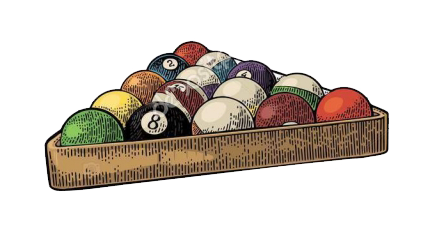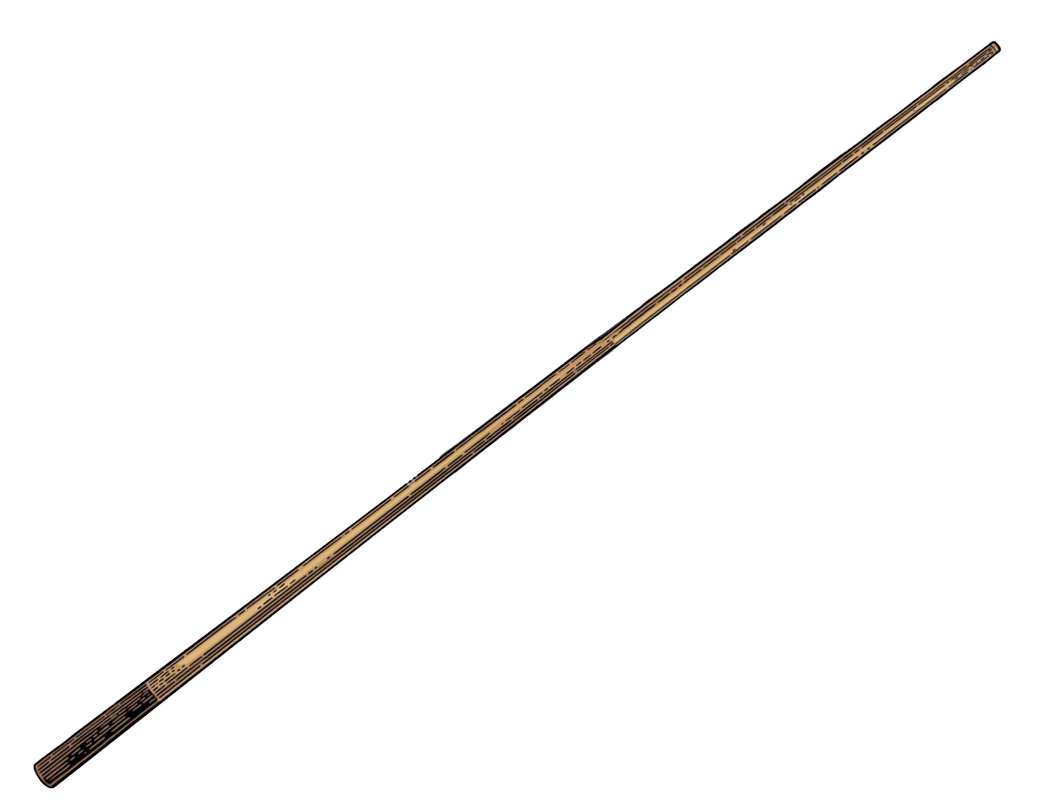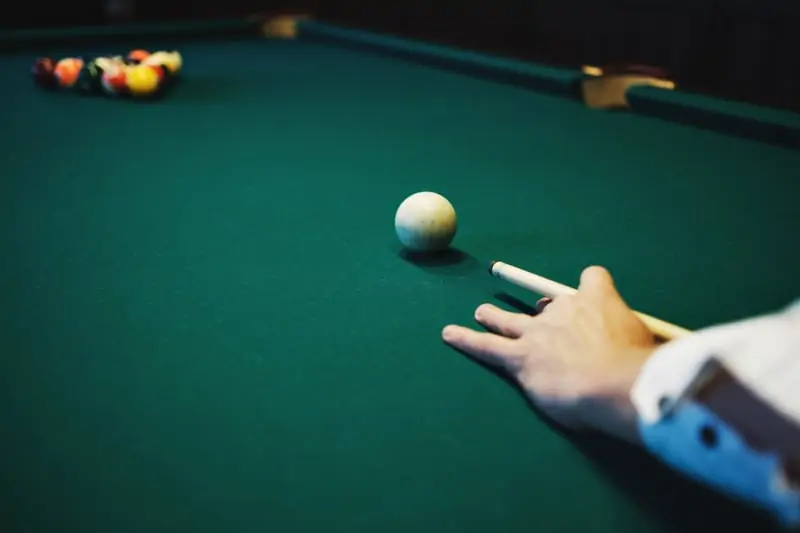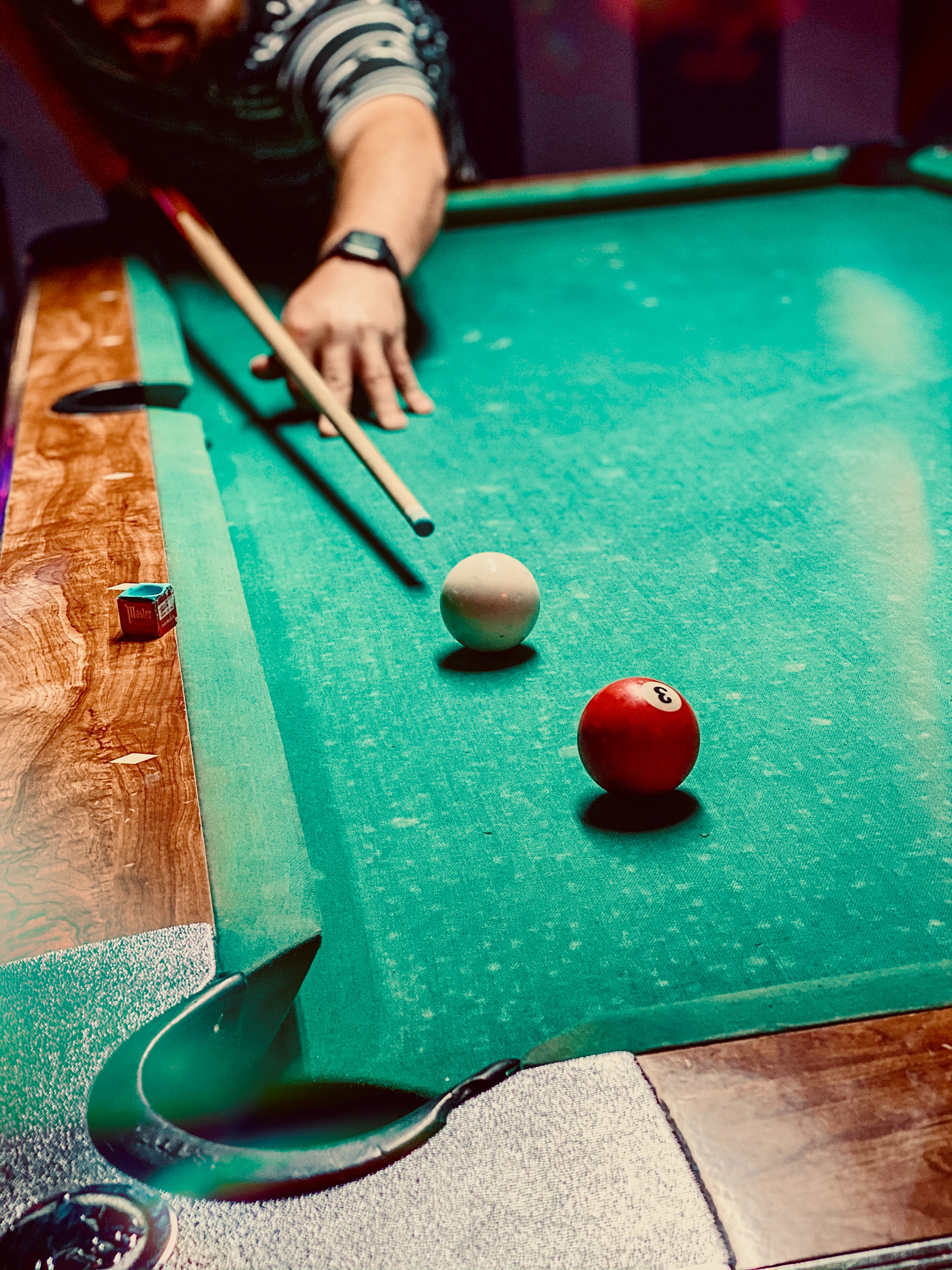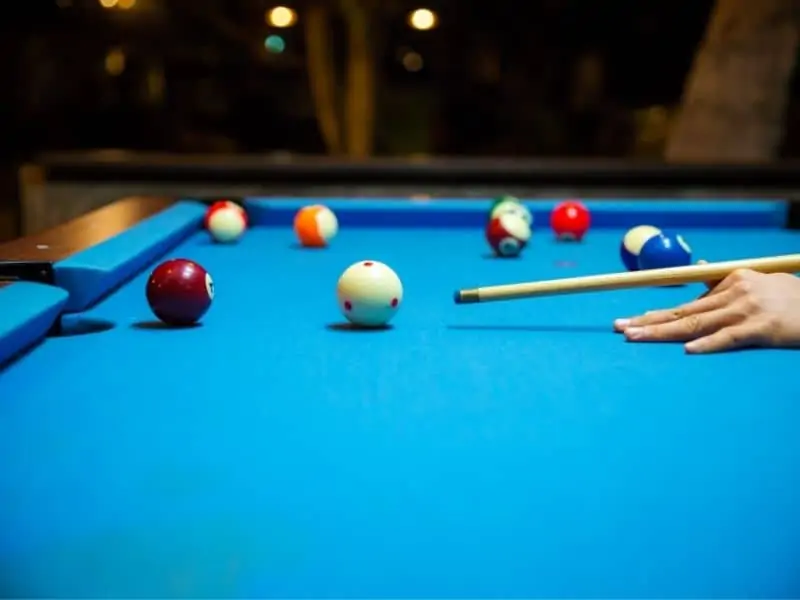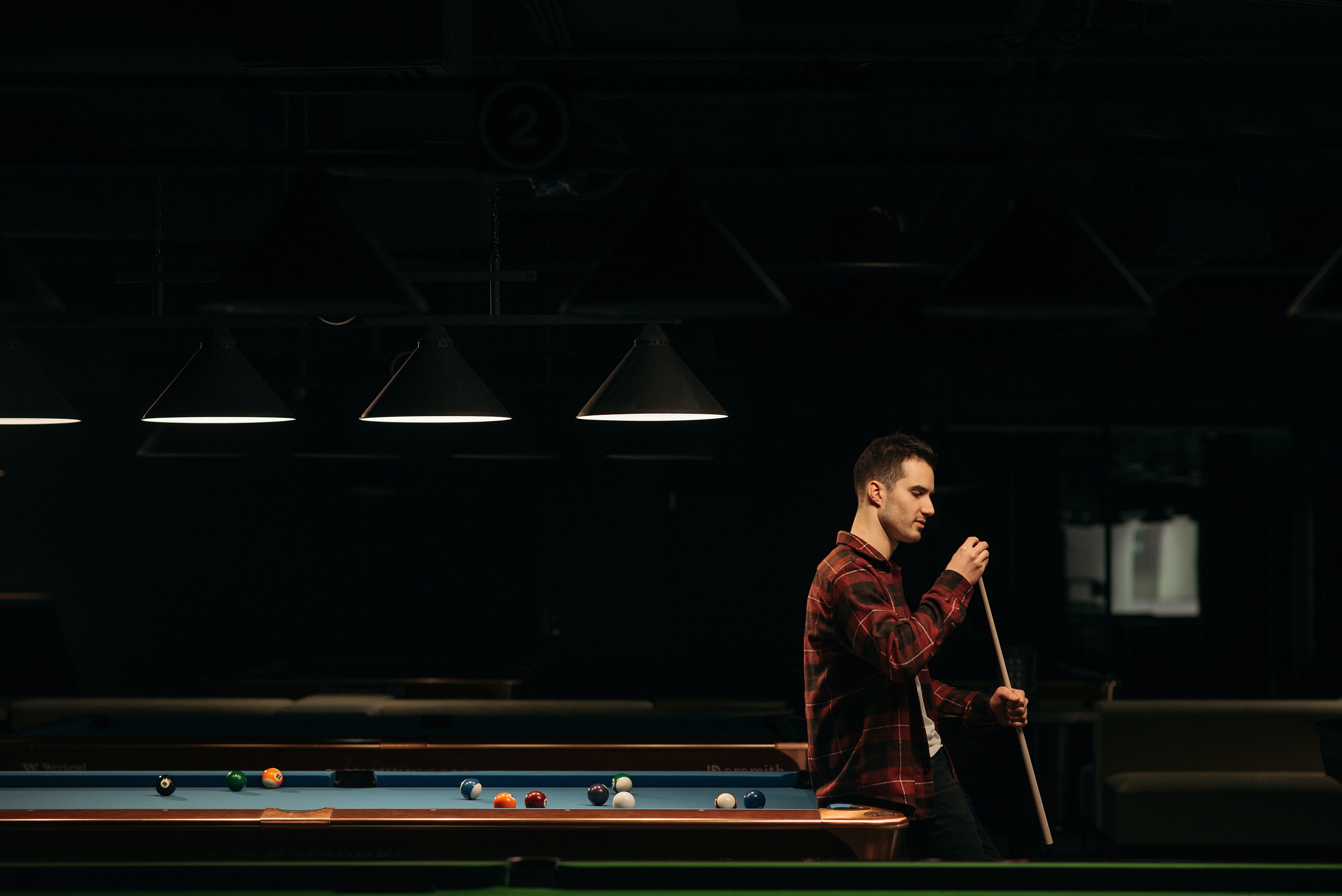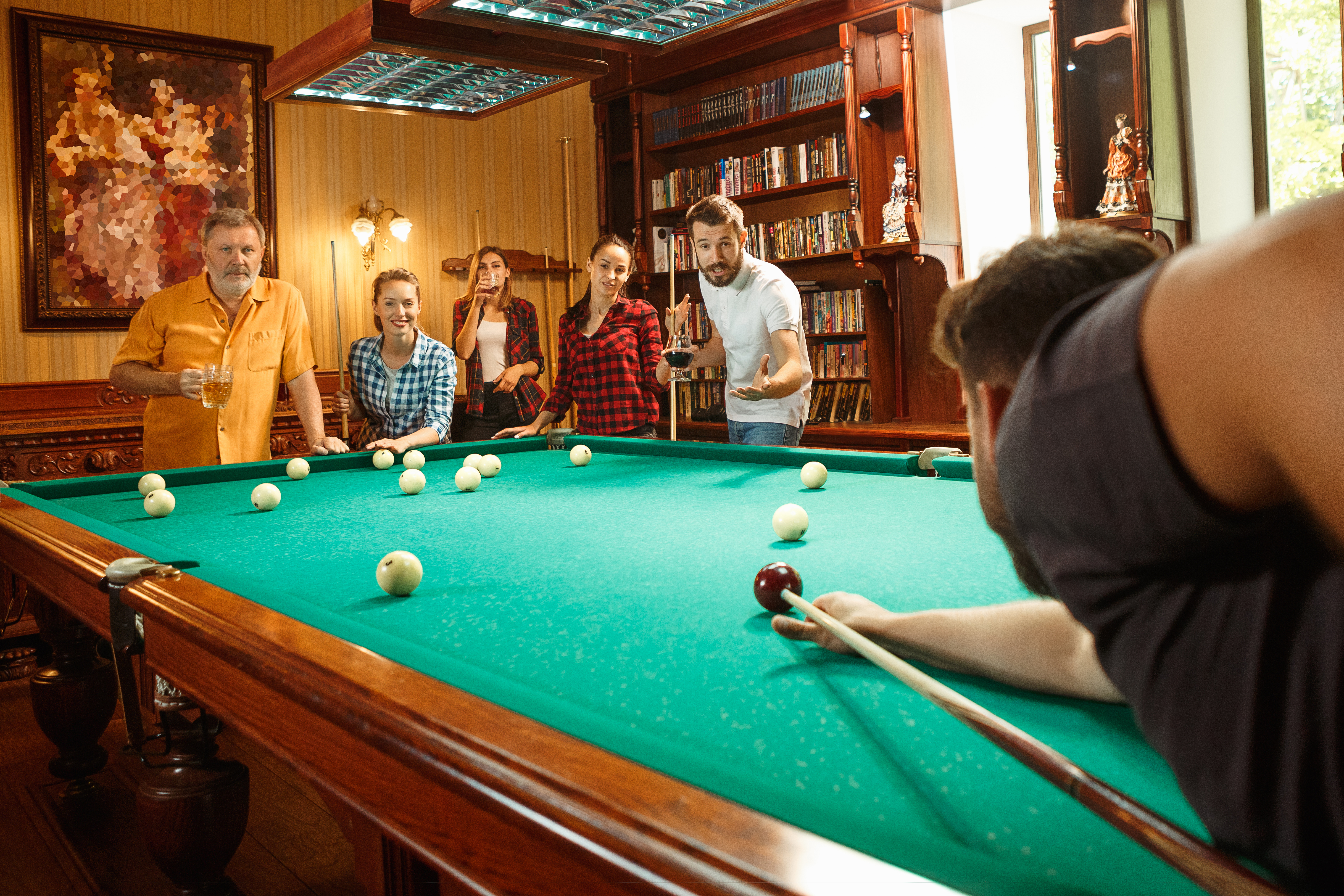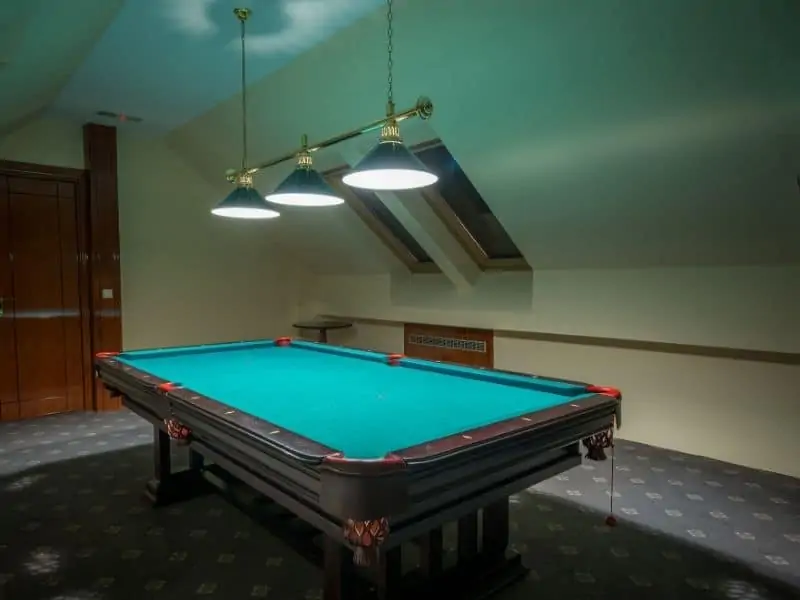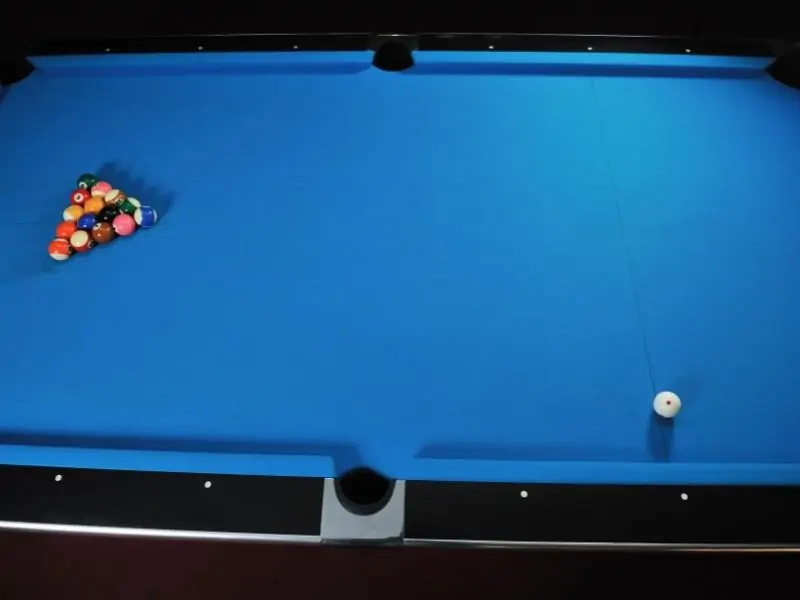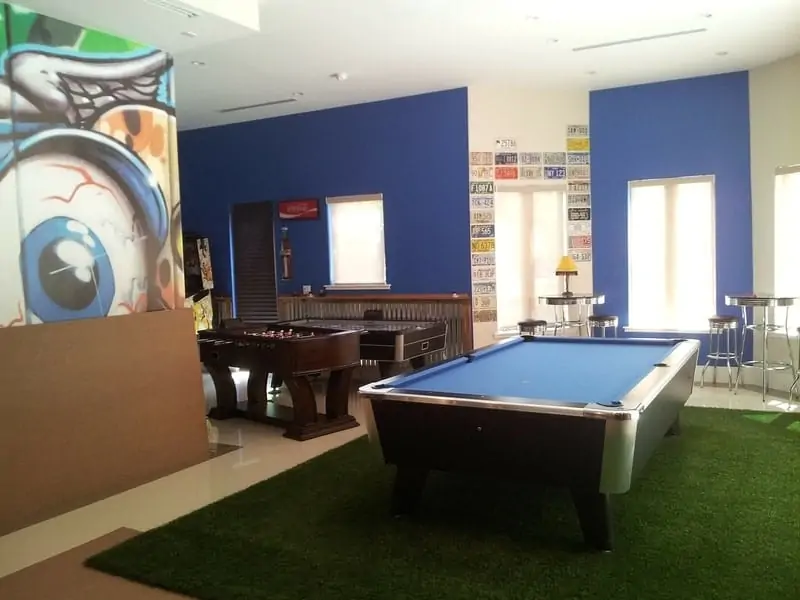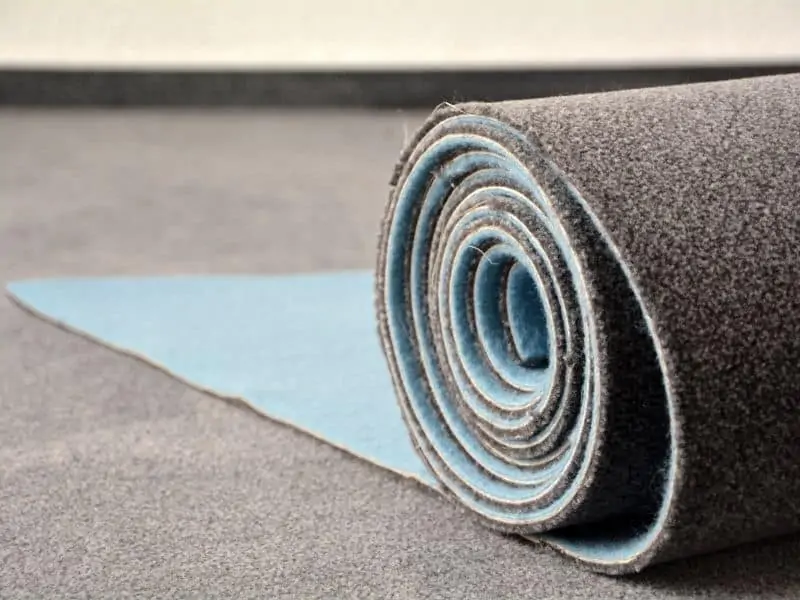There seems to be a lot of myth and confusion surrounding the topic of cue ball size relative to the object balls. And if you play on a lot of public pool tables, especially in bars, recreation centers, or arcades, you may have noticed (or at least suspected) that the cue ball seemed slightly different than the rest of the balls. So with this article, I’ll attempt to cut through the mystery and answer the question, “Is the cue ball bigger or smaller than the object balls?”
In nearly every billiards game, the cue ball is the same size and weight as the object balls, as a rule. This is because even a slight difference in ball size can affect the dynamics of the game. However, certain table types and game styles do feature a smaller or bigger cue ball.
Standard Billiard Ball Sizes
Before we delve into why some cue balls might be sized differently, it helps to get a look at how ball sizes vary across the different billiard games played throughout the world. Here’s a list of the standard ball diameters for the most popular games, from largest to smallest.
- Russian Pyramid/Kaisa – 2 11/16 inches (68 mm)
- Carom Billiards – 2 7/16 inches (61.5 mm)
- American Pool – 2 ¼ inches (57.15 mm)
- Snooker – 2 1/15 inches (52.5 mm)
- British-style or “Blackball” Pool – 2 inches (51mm)
The standard ball size for each game is mostly a factor of table size and the nature of the game. For instance, Blackball is typically played on 6-foot or 7-foot tables with smaller pockets, so is played with smaller balls.
In most of these games, the object balls and cue balls are always the same size, at least on standard tables. It’s only in American pool and Blackball that you’re likely to find a cue ball with a different diameter than the object balls.
The reason for this has to do with a certain type of pool table that many of us start out playing on – the coin-operated table.
The Evolution of Cue Ball Technology
In the modern era of billiards, advancements in cue ball technology have significantly impacted the size and design of the balls used, particularly in coin-operated tables. These advancements have aimed to maintain a consistent playing experience while still enabling the special mechanics necessary for these tables.
Magnetic Cue Balls
One of the most innovative solutions to the cue ball size problem in coin-operated tables is the introduction of magnetic cue balls. These balls are the same size and nearly the same weight as standard object balls. They contain a ferrous core, which allows the table’s internal mechanism to use a magnet to separate the cue ball from the object balls when it is pocketed.
Advantages:
- Magnetic cue balls allow for a uniform size and weight, preserving the natural dynamics of the game.
- Players using these tables can expect a more consistent response when applying spin, force, and direction to the cue ball, much like they would experience on a non-coin-operated table.
Challenges:
- The magnetic core may slightly alter the weight distribution of the cue ball, which might affect the behavior of very sensitive shots.
- Magnetic cue balls are typically more expensive than regular balls, which could lead to higher replacement costs for venue owners.
Optical and Sensor-based Systems
The latest generation of coin-operated pool tables often incorporates advanced optical or sensor-based systems to identify the cue ball. These systems can recognize unique markings or patterns on the cue ball, which are invisible to the human eye but can be detected by a sensor inside the table.
Advantages:
- These systems allow for completely uniform balls in terms of size, weight, and material.
- There is no need for a magnetic core, so the cue ball behaves exactly like a standard ball.
- Players can enjoy a game that is as close to professional standards as possible, even on a coin-operated table.
Challenges:
- Optical and sensor-based systems can be more expensive to install and maintain, potentially leading to higher costs for venue owners.
- These systems may occasionally misread the cue ball, especially if it is dirty or damaged, which might cause a disruption in the game.
Why Are Cue Balls a Different Size On Coin-Operated Tables?
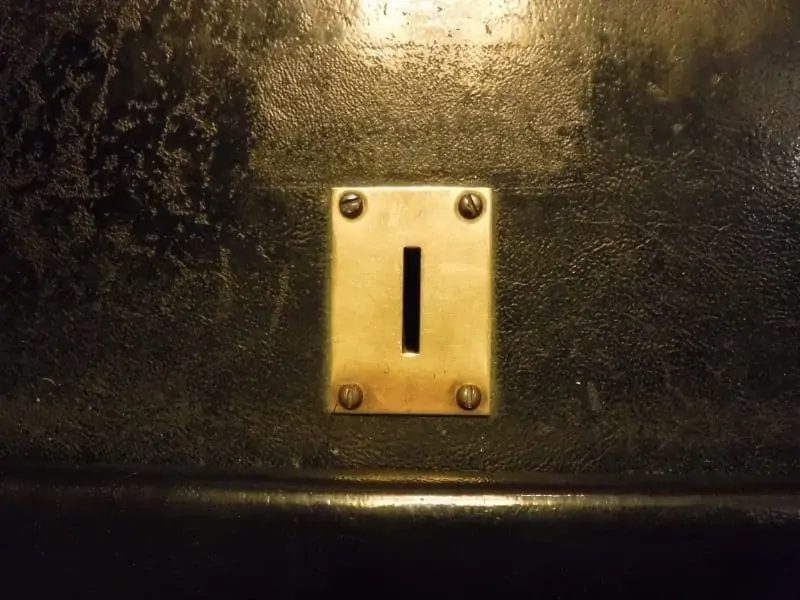
Coin-operated pool tables – often called “bar boxes” – feature internal ball return mechanisms that deliver the object balls to the ball trap as they’re pocketed. The cue balls on many coin-op tables are made a different size so that they don’t get mixed in and trapped with the object balls if a player scratches (accidentally pockets the cue ball).
If the cue ball went straight to the ball trap any time somebody scratched, it would effectively be game over – you’d have to pump in more quarters to release the balls and start all over. Obviously, that would get old pretty quick.
Manufacturers realized this and designed tables with ball return mechanisms that could recognize or differentiate the cue ball and divert it on another track toward the head of the table.
Keeping the Cue Ball in Play
On most older tables, they accomplished this by using a slightly larger cue ball – typically with a diameter of 2 ⅜ inches – and installing a separator or “ball shunt” where the ball return tracks converge. The shunt is placed just high enough to let the 2 ¼-inch object balls pass under it. When the oversized cue ball comes along, the shunt blocks it and guides it down a separate track that leads to a small cubby at the head of the table.
On British coin-operated tables, the ball separation method is inverted – an undersized cue ball – typically 1 ⅞ inches in diameter – is allowed to pass through a smaller aperture while the 2-inch object balls carry on toward the ball trap.
Most modern coin-operated pool tables no longer use this design, however – it has largely been scrapped in favor of more sophisticated methods for cue ball recognition that allow for uniform ball sizes. But these older tables are still out there getting used, particularly in bars and basements.
And in British-style pool, most players still use an undersized cue ball, even on tables with no mechanical ball return. The tradition has simply lived on!
Weighted Cue Balls
Some coin-op tables use a weight-activated ball separation mechanism to recognize and divert the cue ball. The cue balls in these tables have the standard 2 ¼-inch diameter but usually weigh around 6.7 ounces, whereas standard billiard balls weigh either 5.5 or 6 ounces.
Worn Balls and Mismatched Sets
Another possible reason you might encounter an undersized or oversized cue ball is if balls from two (or more) different sets have been mixed together. This is most common in bars and recreation centers, where equipment might be donated or bought second-hand (and likely isn’t the best quality to start with) – but it does happen in some pool halls as well.
As billiard balls become worn, damaged, or lost, as happens fairly often in public venues, the management may replace them one at a time rather than the whole set. This isn’t usually a big deal since most pool balls are almost exactly the same size and weight. But every once in a while, an old oversized coin-op cue ball can wind up in the mix after hanging out in a supply closet for a couple of decades.
Similarly, older balls that have seen a lot of use and become worn may be slightly lighter than any fresh replacement balls added to the set.
So we know that some cue balls are sized slightly differently, rare as they are to come across (unless you live in England). But how much difference can a fraction of an inch really make? Well, as it turns out, a fair bit.
The Player’s Perspective
For the avid pool player, understanding the technology behind the cue ball in coin-operated tables is valuable. It informs them about what to expect when they are playing in different venues and allows them to adapt their game accordingly.
For casual players, the differences in cue ball technology might go unnoticed, but for those who are serious about their game, these nuances are crucial. Knowing how the cue ball will behave allows players to adjust their shots and strategies, enabling them to perform at their best, regardless of the table they are playing on.
How Does Cue Ball Size Affect Gameplay?
Using a cue ball that’s even a slightly different size as the object balls can affect gameplay significantly, primarily due to the difference in mass and the contact point being slightly off-center. Shots involving English will either be easier or harder, depending on the relative cue ball size and the direction of the spin.
Large / Heavy Cue Ball
With a larger and/or heavier ball, stun shots, stop shots, and draws will require a bit more backspin since the extra mass will make the cue ball want to keep moving forward. Along those lines, less topspin will be needed for follow shots, as the massive cue ball will naturally keep rolling forward after contacting the object ball. Also, a heavier cue ball tends to have less “squirt” or deflection off of the aiming line.
Small / Light Cue Ball
With a smaller and/or lighter cue ball, the opposite is the case – stuns, stops, and draws will require less backspin, while follow shots will require more topspin. A lighter ball will also tend to squirt more when sidespin is applied.
Vertical Bounce
Even more problematic is that mismatched balls will tend to bounce off the table a little when they strike one another. This is because their contact point will be slightly above or below the equator, which means part of the force of motion will be exerted vertically, not just horizontally. Whenever a ball leaves the surface of the table even a little, it can affect accuracy.
Rail Shots
Different-sized balls can also make shooting straight down the rails more difficult, as the contact point will be slightly further out from the edge of the cushion (or further in, with a smaller cue ball). When the cue ball strikes the object ball, it will exert a lateral force on it, causing it to bounce off the cushion.
For a more in-depth and technical look at the various effects of different cue ball sizes on object balls, check out this video from the legendary Dr. Dave.
In Conclusion
For the most part, it’s not terribly common to encounter differently-sized cue balls, unless you live in the UK or Australia, where Blackball is popular and the conventional undersized cue ball is still prevalent. However, it does still happen, especially with older bar boxes and hand-me-down billiard sets.
If you’re dead set on using only uniform balls, your best bet is to find a bar with newer coin-operated tables with magnetic or optical-sensor ball return systems – or find a more pro-minded pool hall. Or, of course, buy your own table and billiard ball set!
Other Articles You May Be Interested In:
Best Pool Cues for the Money: Discover the top pool cues that offer great value without breaking the bank.
Pool Table in the Garage? Here’s What You Need to Know: Understand the essential considerations for setting up a pool table in your garage.
Break Cue vs Playing Cue: What’s the Difference?: Learn the key differences between break cues and playing cues to enhance your game.
How Much Does a Good Pool Cue Cost?: Explore the factors that determine the cost of a high-quality pool cue.
Are Mini Pool Tables Worth It? A Complete Guide: Read our comprehensive guide on mini pool tables and decide if they’re the right fit for you.
